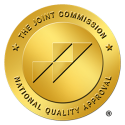In the realm of mental health, the terms “panic attack” and “anxiety attack” often find themselves used interchangeably by the general populace. However, despite some similarities, these terms represent two distinct experiences. It’s essential to differentiate between them to ensure appropriate care and support for individuals facing these challenges. This article delves into the similarities and differences between anxiety and panic attacks and offers some guidance on managing their symptoms.
Similarities Between Anxiety and Panic Attacks
Before delving into the differences between anxiety and panic attacks, it’s essential to highlight some common features shared by these conditions:
- Categorization under DSM-5: The Diagnostic and Statistical Manual of Mental Disorders, Fifth Edition (DSM-5), categorizes anxiety disorders as a distinct grouping of mental health conditions, with panic disorder listed under this umbrella. This categorization implies a level of relationship between these disorders, primarily revolving around feelings of fear and anxiety.
- Symptom Overlap: Both anxiety and panic disorders manifest through feelings of overwhelming worry, extreme nervousness, and excessive fear. These emotional symptoms can sometimes manifest physically, creating a tangible overlap in how these disorders present.
- Physical Discomfort: Individuals experiencing anxiety or panic attacks often report physical discomfort. The body’s response to perceived threats or extreme stress can trigger a range of physical symptoms that are common to both conditions.
- Treatability: Fortunately, with appropriate care and intervention, individuals facing either anxiety or panic attacks can experience significant relief and an improved quality of life.
The Difference Between Anxiety and Panic Attacks
The distinction between anxiety and panic attacks primarily revolves around the nature of symptoms an individual is likely to experience, the typical duration of these symptoms, and their usual intensity:
- Symptom Characterization:
- Anxiety is chiefly characterized by a sustained emotional distress, typically manifesting as worry, dread, and unease. Although physical symptoms can arise, they often take a backseat to emotional manifestations.
- Panic attacks present predominantly through acute physical symptoms such as breathlessness, accelerated heartbeat, chest discomfort, and tingling in extremities. While there are psychological aspects to panic attacks, the physical symptoms are often the primary source of distress.
- Duration of Symptoms:
- Anxiety often exhibits a prolonged course, with symptoms persisting consistently over several weeks to months.
- Panic attacks are usually brief, with symptoms typically receding within about 10 minutes of onset.
- Intensity of Symptoms:
- The severity of anxiety symptoms can range from mild to severe, often fluctuating over time.
- Panic attacks are acutely distressing, with individuals sometimes fearing they are facing a life-threatening situation.
Managing Symptoms of Anxiety and Panic Attacks
People who have panic attacks or other anxiety symptoms often benefit from professional treatment. But there are a few steps you can take on your own to ease or manage your symptoms. Here are a few tips that can help:
- Mindfulness Practice: Mindfulness encourages individuals to stay present, observe their surroundings, and acknowledge emotions without judgment or immediate reaction. This practice can create a buffer against the overwhelming feelings characteristic of anxiety or panic attacks.
- Breathing Techniques: Practicing slow, deep breaths can provide a grounding effect during episodes of intense anxiety or the onset of a panic attack. Controlled breathing can help manage the body’s fight-or-flight response and promote calmness.
- Avoidance of Seclusion: During anxiety episodes or panic attacks, the instinct might be to withdraw. However, isolation can exacerbate symptoms. Establishing a reliable support system with close friends or family can provide much-needed support during challenging times.
- Maintaining a Balanced Diet and Regular Physical Activity: Incorporating regular physical activity and maintaining a balanced diet can contribute positively to one’s mental and physical health. Engaging in enjoyable physical activities can also serve as a therapeutic tool for managing stress and anxiety.
- Professional Treatment: While self-help strategies can provide temporary relief, professional treatment is invaluable for individuals facing frequent anxiety or panic episodes. Treatment plans may include cognitive-behavioral therapy (CBT), medication management, or a combination of therapies tailored to the individual’s needs.
- Education and Awareness: Understanding the triggers, symptoms, and available treatment options for anxiety and panic attacks can empower individuals to seek professional help and convey their experiences accurately to healthcare providers. Moreover, educating those around them—family, friends, and colleagues—can foster a supportive environment for managing and overcoming the challenges associated with these conditions.
The nuanced differences between anxiety and panic attacks underscore the necessity for accurate understanding and tailored approaches to treatment. Being equipped with the right information and a supportive network—both personally and professionally—can significantly enhance the journey towards better mental health for individuals facing anxiety and panic disorders. Through a blend of self-management strategies and professional intervention, those affected can navigate towards a more serene and balanced state of mind, conducive to a fulfilling life.
Find Treatment for Anxiety or Panic in Chattanooga
Iris Wellness Group offers personalized outpatient programming for adults and adolescents who have been struggling with anxiety disorders, panic attacks, and other mental health concerns. Our mental health treatment center in Chattanooga, Tennessee, is a welcoming and supportive environment where adults can benefit from a wide range of customized therapies and support services.
Our patients work in active collaboration with a team of highly skilled professionals. We take the time to get to know each person as a unique individual, so that we can develop the individualized plans that can help them achieve improved health and pursue a more hopeful future.
To learn more or to schedule a free assessment, please visit our admissions page or call our center today.










